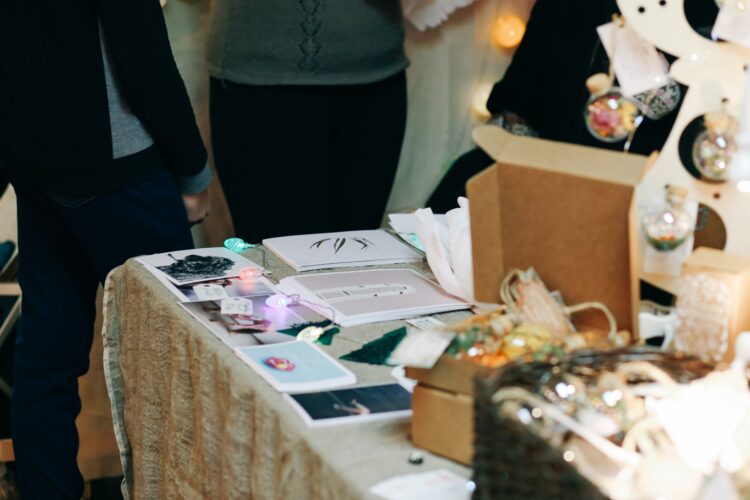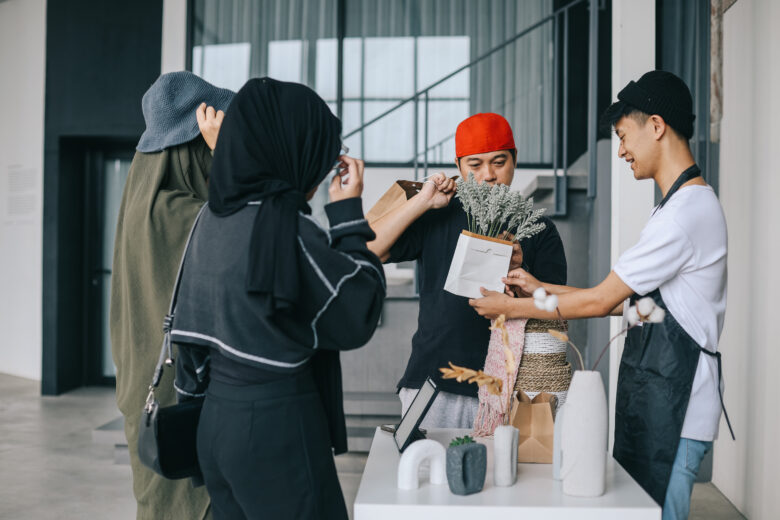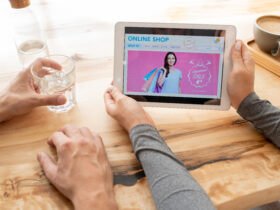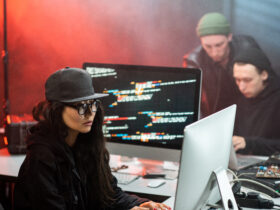In the fast-paced environment of trade show exhibits, where there is a lot of competition for attention and visitors have a lot of foot traffic, the aisle is more than just a path. It is an opportunity for you to build the brand.
The space between booths is often disregarded but can be transformed into an avenue for experiential storytelling and brand connection. When businesses think of walkways as active elements of their exhibit strategy rather than functional facets, they can create distinct, memorable experiences for visitors.
Furthermore, walkways are an opportunity to grab people before they even get to the booth and provide visual and sensory cues, direction, and themes that extend their brand story beyond their booth.
Turning Booth-Lined Walkways into Strategic Storytelling Tools
Leverage Trade Show Rental Booths to Align with Aisle Design
Trade show rental booths provide businesses with flexibility when constructing their spaces. Part of that flexibility can be in the layout of the booth, including how to configure its affiliation with the aisle space next to it. Designing the booth layout to extend partially into the aisle can be a welcoming strategy to draw attendees into a brand’s activity, especially when combined with other elements of activation like signage, digital displays, graphics on the floor, or interactive exhibits. Ideally, visitors flow between the aisle space and the booth space; the experience becomes one that feels free and organic rather than closed off.
Many exhibit rental booths also provide the element of modularity, allowing brands to explore design concepts without a long-term agreement. This means for the individual event, the brand can commit to designing their aisle strategy to complement a theme or product launch. For example, the brand can build immersive tunnel entrances or utilize LED-welcoming mats that leverage visual intrigue for passersby.

Use Floor Graphics to Tell a Sequential Story
Floor decals and strategic layouts can convert walkways into storytelling timelines or journeys. This area can take visitors through a brand’s origin story, values, and vision, encouraging them to keep exploring. With the use of arrows, footprints, or symbolic pathways, participants engage and follow each other from curious attendees to booth visitors, building their engagement through anticipation along the way.
For example, a tech company could create its innovation timeline along the aisle, with each year, significant milestones, and visuals punctuated along the floor where large elements of a brand story happen. A wellness brand could use calming graphics and positive affirmations that reflect their mission to influence perception and mood in their visitors before they even arrive to interact directly with their brand team.
Integrate Booth Sensory Engagement to Stop Foot Traffic
When an experience engages an individual through several senses, it becomes more memorable. Walkways can engage senses through slight soundscapes, ambient lighting, scent diffusers, or contrasting flooring to redirect the passerby’s attention toward a brand message. When a trade show attendee experiences an unexpected sensory cue that registers in a busy trade show, it provides them with a moment of pause, and that pause is a brand experience.
Consider nature-inspired textures for sustainability-driven brands or synchronized lighting for tech-forward brands. These sensory cues do not have to be assaulting; success is derived from being unexpected and perfectly executed within the brand narrative.
Invite Booth Interaction with Walkway Installations
Interactive elements in corridors invite attendees to stop, play, explore, and then engage. These can include anything from touchscreens showcasing short videos to gamified experiences such as quizzes or prize wheels. Any creative installation that asks a question, allows a reaction, or shows how to take something away can turn your boring aisle into its own mini-exhibit.
Even a very simple installation, like motion-activated lights or augmented reality displays that kick in as visitors approach, can draw curiosity. It’s important to remember that this type of interactivity not only pulls attendees in but it increases dwell time, therefore giving your brand that much more opportunity to spread its messaging.
Extend the Booth Theme with Visual Consistency
To tell a cohesive story, you must be consistent. When the visual elements of your booth are continued into the aisle, including colors, type, icons, and thematic style, the whole space becomes your branded world. Everything from a futuristic minimalism booth to one that exudes heritage craftsmanship will remain credible and be more memorable to visitors if a language of design exists and is mirrored in the aisle.
For example, a brand that is centered on eco-consciousness might promote natural textures such as bamboo or greenery in the aisle. A cosmetics company might even extend its glamorous red carpet design into the walkway with glittering floor decals and elegant signage. In effect, the aisle becomes an appetizer that draws visitors into the main experience, leading them in with visual breadcrumbs.
End Point
The walkway space at trade shows has an enormous potential for brands to enhance their visitors’ experience and create a meaningful connection. Careful consideration of booth design can provide powerful, memorable experiences, potentially before any words are exchanged. When there is a large number of static displays to weave through, the brands that use aisles as storytelling elements to engage will differentiate themselves from the others to build curiosity, develop booth traffic, and build emotional relevancy way beyond the trade show.











Leave a Reply